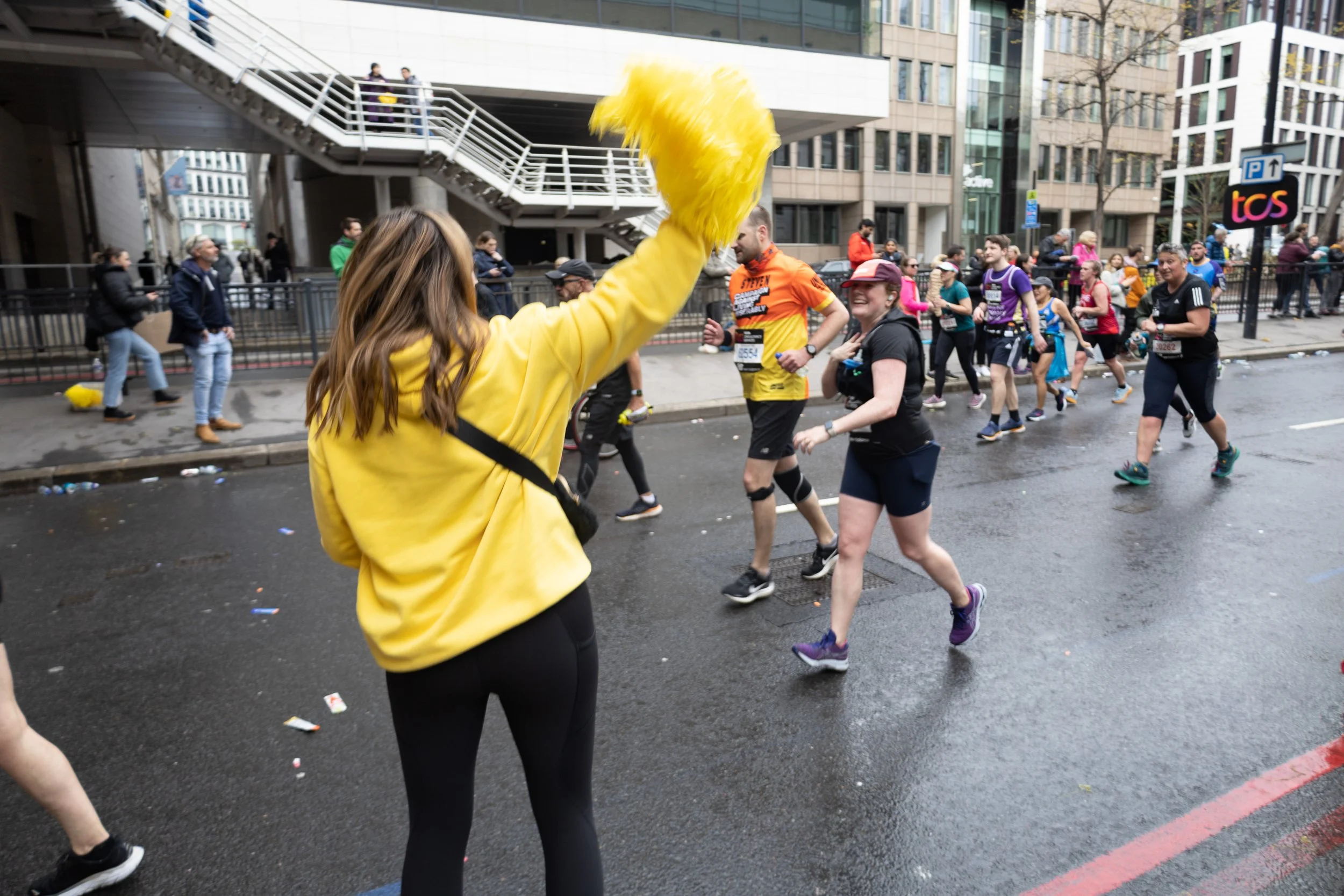Gender Ideology In Sport
I am fascinated by the factors that influence why people do, and do not, participate in physical activity and it’s a key part of my work to understand why women in particular may, or may not, choose to be active.
[This is the second post in my ‘Sport and Society’ series, and although you don’t need to read them in order I would suggest starting with this very short introduction to barriers to participation in physical activity if you’ve not read it already!]
There are a myriad of reasons why people don't participate in physical activity - they're embarrassed, they've had bad experiences in the past, they're busy, they don't know how to access activities, they're intimidated, they don't believe physical activity is 'for' them, they don't have the resources to access it. The list goes on and on, and all these reasons are underpinned by some pretty hefty social issues as well. I am forever saying that participation is complex, and that's because it is.
This post is a brief introduction to the idea of gender ideology and how it has shaped sport as we know it, which in turn affects whether people do or do not participate in physical activity.
Gender Ideology in Sport
Gender (based on the binary sex classification of male/female) is one of the principle means by which society is organised and the expectations we have of individuals ‘are shaped by, and in turn shape, a host of ideologies of binary differences in ability by gender’ (Wachs, 2002). Sport is an area where these expectations have had a significant influence.
In Britain modern sport emerged in the Victorian era as a ‘symbol of masculinity and chauvinism…the ‘natural’ domain of men’ which women were, for the most part, excluded from as women who engaged in sport were considered unattractive, acting contrary to conventional ideas of femininity and risking their psychological and physical wellbeing (Hargreaves, 1994; Jeanes, Hills and Kay, 2016). No joke, there were very real concerns women’s uterus’ might fall out with too much exertion and ideas that women’s bodies couldn’t handle physiological stress continued to influence whether race organised allowed women to complete in endurance events up to the 1980s.
“The belief in innate biological and psychological differences between the sexes constituted a powerful and pervasive form of sexism”
Gender ideology is so pervasive that we don’t always realise we’re influenced by it, and it is so ingrained it can take generations of action to effect change, which means that ideas from the Victorian era about gender still have some influence today.
Sport Along Gender Lines
While society has become more receptive the idea of women engaging in sport and physical activity traditional ideas about what’s ‘appropriate’ are still influential and some sports are still seen as more suitable for one gender than the other.
During the Victorian era the few sports that were considered acceptable for women to participate in were generally those that emphasised grace, beauty and co-ordination and that either involved solo performances or competitions where participants could be separated by nets or other barriers to protect them from physical contact as it was believed that women were naturally weak and vulnerable to injury and over exertion. It might seem laughable today, but these ideas continue to influence what sports society considers appropriate for women and women who do individual sports such as gymnastics, figure skating and some track and field events are socially valued because they don’t threaten gender ideology.
Sport is one of the key ways that society works to police gender boundaries and maintain ideas about what it means to be male or female. It is hugely effective because sport has ‘traditionally consisted of body movements, norms, thinking processes and organisational structures that reproduce a form of masculinity established through strength, power and conquest….the form that is most widely accepted in society’ (Coakley and Pike, 2014). Sport is where boys learn what it means to be a man in their society and achievement is associated with masculinity as being good at sport unquestionably raises a man’s social status, while for women it’s not quite so straightforward. Think about the phrase ‘throw like a girl’;
“If one can’t throw, one ‘throws like a girl’. This adage calls a boy’s masculinity into question...note that bodily incompetence at sport is synonymous with femininity...there is no analogous threat to the femininity of a woman who ‘throws like a girl’. In fact, a successful execution of the throw may call her femininity into question”
Where women do participate in sports like football or hockey, that have historically been off limits, they often adopt strategies to avoid being seen as ‘invaders’, reassuring people that they’re not going to use sport to challenge dominant gender ideology. This is known as the ‘female apologetic’. For example, a women’s football team might call themselves ‘ladies’, play up their femininity by wearing make up, dresses or skirts or overtly feminine hairstyles during competitions. By emphasising how feminine they are women who engage in these sports make it clear that they’re not a threat to the idea that sport is the natural domaine of men.
“Talent counts, but so do beauty, class, weight and politics. The anachronistic lack of ambivalence about femininity in both sports is part of their attraction, harking back to a simpler time when girls were girls, when women were girls for that matter: coquettish, malleable, eager to please.”
Running alongside this is the contrasting idea that women in sport may only be ‘considered qualified if they ‘play like a man’’ (Coakley and Pike, 2014), something that has been played out in ‘‘battle of the sexes’ commentary which negatively compares female athletes to their male peers’ (Chapin, 2017). Think about it, when we talk about sport in your day to day life it’s generally assumed that we’re talking about mens support unless we specify otherwise by saying we’re talking about a woman’s team, competition or athlete.
Because it is so physical in nature sport presents a unique opportunity to highlight the differences between men and women, valuing masculinity while undermining women who are perceived to transgress gender boundaries. As gender in society is so closely policed, women may not be comfortable transgressing these boundaries to participate in sport as it may simply not be worth the repercussions.
Women have never had it so good….maybe
When I talk to people about women in sport often one of the first responses I get is along the lines of ‘but lots of women play sport, we’re equal now’ and it’s easy to see why. Since the 1950s women’s participation in sport and physical activity has been gradually increasing, at the 2012 London Olympics women accounted for 44% of participants and competed in every event and Sport England’s Active People Survey, which tracks the number of people in England taking part in sport and physical activity, indicates women’s participation has increased and the gender gap, although still there, has narrowed. All good progress, but the reality is that we continue to see far fewer women than men participate in physical activity and in real terms the changes we have seen have been marginal.
Sport England has commented that the difference in participation between men and women isn’t because women don’t want to be active but because they ‘are afraid to exercise because of fear of judgement’ and while society has become more receptive to women participating in physical activity the traditional ideas of what is an isn’t appropriate are still influential;
with few exceptions sports are divided along gender lines with men competing agains men, and women competing against women
in some cases there are different regulations and standards imposed for each gender, and often those standards are higher for men
women’s sport receives less media attention than men’s and their coverage tends to be sexualised with emphasis placed on the athletes personal lives and cosmetic appearance rather than their sporting achievements
The impact of this is that these factors can be considered to be acting together to trivialise women’s participation in sport and send powerful messages to society reinforcing gender ideology, which in turn has an impact on women’s participation in physical activity.
This is a huge area with lots of complex and interrelated factors at play and over the next few weeks I’ll be sharing more posts that explore the barriers to participation in physical activity that women might face but I hope that this post has set the scene and provided a useful intro gender ideology.
images: Kaye Ford shot during The Speed Project 5.0
if you’d like to explore any of the sources referenced in this post please let me know and I will send you more details.














